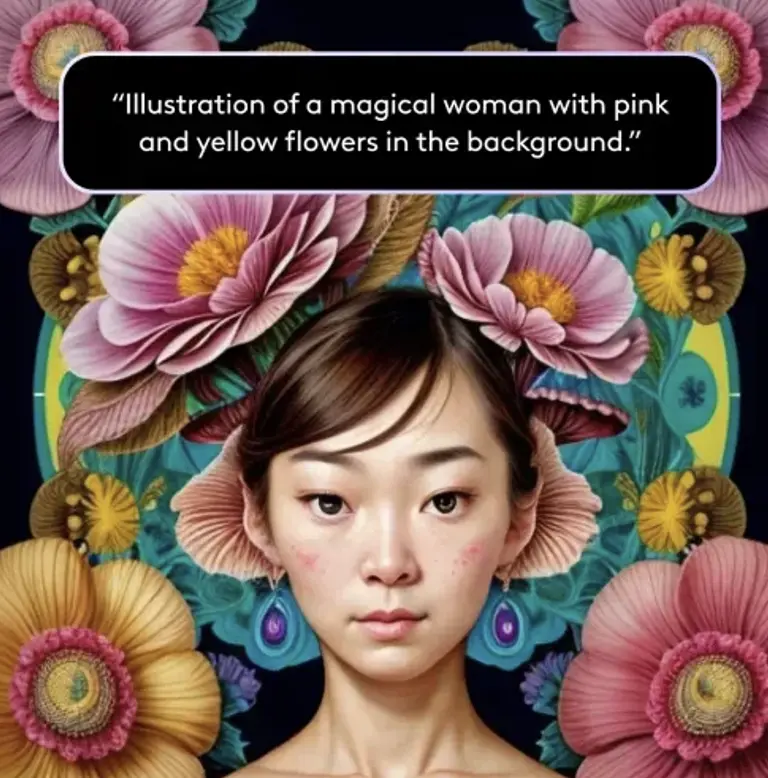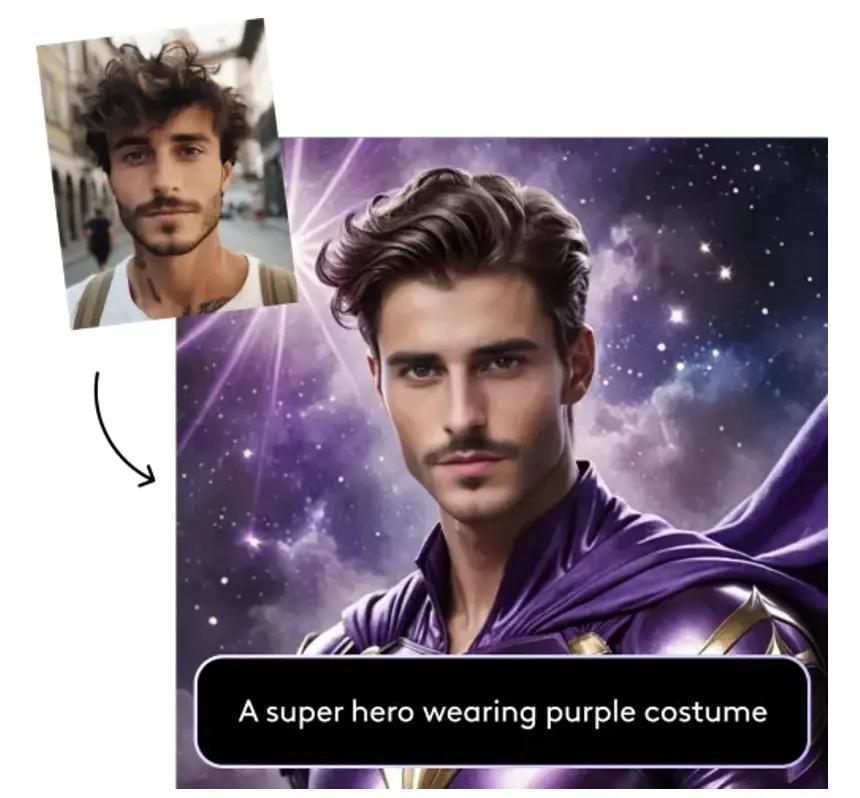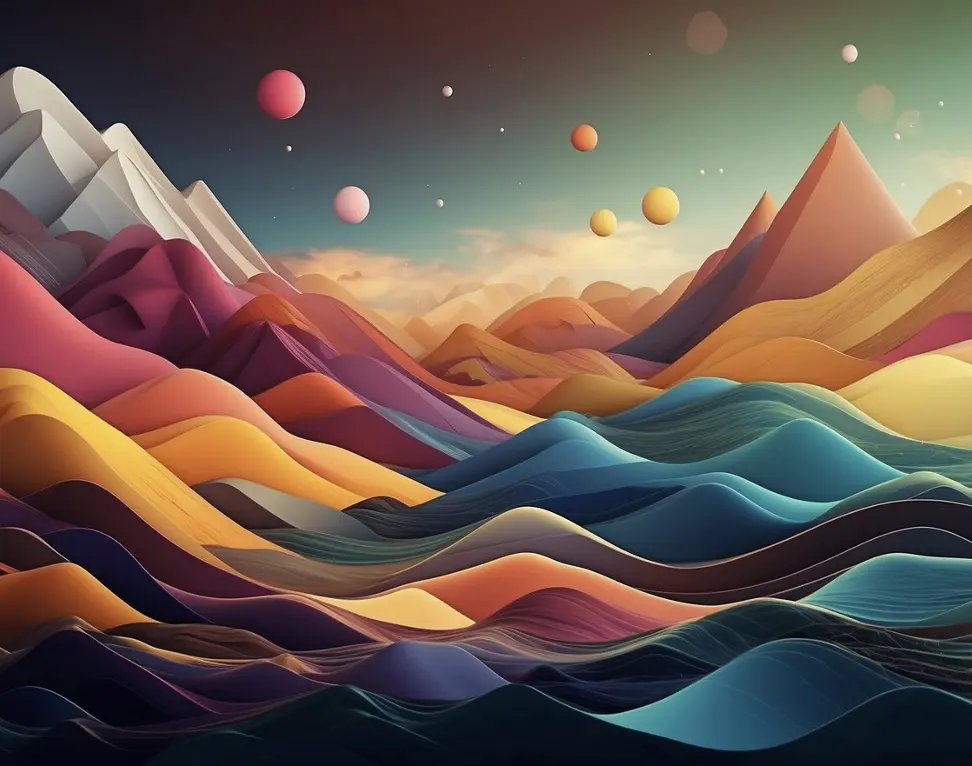Overview of Photoleap’s AI Text-to-Image Generator

Photoleap’s AI Text-to-Image Generator provides a robust and accessible toolset for transforming text-based prompts into compelling images. Key elements include the core functionality and user interface, both essential for users seeking creative and efficient image generation.
Core Functionality
At its heart, the AI Text-to-Image Generator converts user-provided text into visually engaging images. This feature supports over 70 different styles, allowing users to customize the artistic output to suit their needs. Whether one types “a clown flying an orange kite on a sandy beach” or more abstract ideas, the AI processes these inputs and delivers relevant visuals.
The generator leverages machine learning algorithms to interpret descriptive prompts accurately. This technology offers flexibility, making it suitable for generating social media content, enhancing digital art projects, or creating unique backgrounds. Users can even superimpose characters or elements, adding further depth and personalization.
User Interface and Experience
The interface of Photoleap’s AI Text-to-Image Generator is designed with user-friendliness in mind. Navigating to “AI Tools” is straightforward, with clear labeling and easy access points. Upon selecting “Text to Image,” users are prompted to enter their descriptions in a simple, intuitive text box.
Visual feedback is swift, ensuring minimal lag between input and result. This seamless experience helps users stay focused on their creative process. Additionally, the interface provides a preview of styles, enabling quick selection and experimentation. It’s engineered to accommodate both novices and experienced users, guiding them through the steps efficiently without overwhelming complexity.
Technical Aspects of AI Image Generation

AI image generation involves multiple complex technologies, including the use of varying algorithms and considerations around image quality and resolution.
Algorithm and Processing
The core of AI image generation lies in the algorithms used. These include techniques like Generative Adversarial Networks (GANs) and Diffusion Models. GANs consist of a generator and discriminator that work in tandem to create and evaluate images.
Diffusion Models, another popular technique, generate images by iteratively refining noise until a high-quality image is formed. These models are more flexible and can produce diverse visual outputs.
Hardware plays a significant role in the efficiency of these algorithms. High-end GPUs accelerate training and image generation by handling large-scale computations effectively. This combination of software and hardware enables us to produce images swiftly and accurately.
Image Quality and Resolution
The quality and resolution of images generated by AI are crucial for their usability. Higher resolution means better detail and clarity, which is essential for applications in fields like digital art and media production.
AI Text-to-Image Generators leverage advanced neural networks to ensure that images are not only high in resolution but also rich in detail. Training on diverse datasets allows these models to generate images that closely match user inputs, producing realistic and high-quality visuals.
Moreover, feedback mechanisms enable iterative improvements in image quality. By continuously learning from user feedback, the models evolve to produce even more refined and detailed images over time.
Creative Applications and Use Cases

Utilizing Photoleap’s AI Text-to-Image generator opens up diverse possibilities for various domains. We will explore how this tool benefits graphic design, advertising, personal projects, and social media content creation.
Graphic Design and Advertising
Photoleap’s AI Text-to-Image feature is a valuable asset for graphic designers and advertisers. By inputting a textual description, we can generate high-quality visuals that match the campaign’s theme or branding guidelines.
This tool allows us to create custom graphics for advertisements quickly, eliminating the need for extensive photo shoots or stock image searches. We can also use it to prototype designs, visualize concepts, and tweak elements without starting from scratch.
For branding projects, generating unique imagery that is cohesive with our brand identity becomes streamlined. This level of customization enhances brand storytelling and consistency.
Personal Projects and Social Media Content
For individual creators and social media enthusiasts, Photoleap offers exciting creative opportunities. We can generate personalized imagery by describing our vision, making it ideal for unique birthday cards, custom photo-books, or original digital art.
On social media, where visual content plays a crucial role, leveraging AI-generated images can increase engagement. We can produce eye-catching visuals for posts, stories, and ads, aligning with our personal style or trending topics.
With features like generating backgrounds, textures, or thematic images specific to our content, maintaining a visually appealing social media presence becomes more manageable. Plus, the speed and efficiency of the tool mean we can keep up with the fast-paced nature of social platforms effortlessly.
Comparative Analysis with Other AI Generators
When evaluating our AI text-to-image generator from Photoleap, it’s imperative to compare it with notable models such as DALL-E 3, Google Imagen2, and Midjourney. We will examine both feature sets and performance metrics to understand where each generator excels.
Feature Set Comparison
Our AI generator boasts comprehensive features designed for seamless user experience. It excels with its intuitive UI and flexibility in image output formats.
DALL-E 3 offers natural language support and customization options. Google’s Imagen2 is known for photorealism and generating images with integrated text. Midjourney focuses on artistic and high-quality rendering.
Bing Image Creator and DreamStudio emphasize speed and accessibility, providing quick results suitable for various applications.
Performance Benchmarks
Performance is measured by image quality, speed, and user satisfaction. Our platform provides rapid image generation without compromising quality.
DALL-E 3 performs exceptionally well in accuracy and consistency. Google Imagen2 leads in creating realistic images but takes longer to process. Midjourney offers detailed, stylized images, often at a slower pace.
DreamStudio and Bing Image Creator are optimized for everyday use, balancing quality and speed proficiently.
By considering these aspects, users can select the most suitable AI generator for their needs.
Practical Guidelines for Users
In using PhotoLeap’s AI Text-to-Image Generator, it’s essential to know how to get started effectively and how to optimize your image results for the best experience.
Getting Started with PhotoLeap
Downloading and Installing: Begin by downloading the PhotoLeap app from the App Store or Google Play. Once installed, open the app to explore its features.
Navigating to AI Tools: Access the AI Tools by tapping the menu icon at the top. Look for the “Text to Image” option, an essential feature for creating AI-generated art based on textual prompts.
Entering Your Prompt: In the “Text to Image” section, type your desired description in the prompt box. For example, you might enter “a clown flying an orange kite on a sandy beach.”
Selecting Styles: Choose from over 70 available styles to match the mood of your image. Styles range from realistic to abstract, ensuring something suitable for your specific project.
Generating Your Image: After setting your prompt and style, click “Generate.” The AI will create an image based on your input, and you can further tweak or save the image as needed.
Tips for Optimizing Image Results
Be Specific in Your Descriptions: Detailed prompts lead to more accurate images. Instead of typing “a beach,” specify “a busy beach with golden sand under a clear blue sky.”
Experiment with Styles: Don’t hesitate to try different styles to see which best fits your creative vision. Each style can give your image a unique feel.
Use High-Quality Prompts: High-quality prompt inputs, such as well-structured sentences and specific adjectives, yield better outputs. For instance, “a serene sunset over a misty mountain range” will likely produce a more vivid image.
Editing and Enhancing: Once your image is generated, use PhotoLeap’s editing tools to enhance it. Adjust brightness, contrast, and filters to refine the final result.
Trial and Error: It’s a good idea to generate multiple versions to find the best one. Slight variations in your prompt can produce significantly different outputs.
These guidelines will help users maximize their experience with PhotoLeap’s AI Text-to-Image Generator, ensuring creative and high-quality results.
Future Implications and Development
The integration of AI into image generation is set to bring profound changes across various fields, demanding continuous adaptation and innovation.
Industry Trends and Predictions
AI-driven image generation technology is becoming integral to various industries. In the year 2023, major platforms like Adobe and Canva incorporated text-to-image generators, showing a trend towards mainstream acceptance.
This signals a shift where traditional design and photography tools increasingly lean on AI capabilities. We expect this trend to expand as the technology evolves, enabling more sophisticated and nuanced image creation. Industry leaders are likely to invest more in AI to maintain competitive advantages, leading to better, faster, and more efficient design processes.
Several sectors, including marketing, entertainment, and education, could benefit significantly from these advancements, making content creation more accessible and diverse.
Anticipated Feature Updates
The future holds exciting potential for feature updates in AI image generator. Photoleap AI is expected to refine its Text-to-Image function by improving algorithmic accuracy and user interface simplicity.
Advanced customization options might soon emerge, allowing users to tweak the smallest details of generated images. Enhanced integration with other AI tools could offer seamless workflows, merging image generation with editing and enhancement processes.
There’s also potential for development in understanding context better, which would enable more targeted and relevant image outputs. These updates would not only streamline the creative process but also empower users to produce higher-quality images with less effort, driving continuous innovation in the field.
Frequently Asked Questions
We address common queries about the features, usability, and capabilities of Photoleap’s AI text-to-image generator. This tool is designed to create unique visuals seamlessly.
What features does Photoleap’s AI text-to-image generator offer?
Photoleap’s AI text-to-image generator allows us to create customized images based on text descriptions. It includes tools for enhancements, superimposing images, and adding layers and visual effects. These features make it versatile for various types of image creation and editing needs.
Can the Photoleap AI text-to-image generator produce high-resolution images?
Yes, the tool can produce high-resolution images. We can enhance image quality and even upscale images to 4K resolution using the built-in AI Enhance tool. This ensures that the generated visuals are sharp and detailed.
How user-friendly is the interface of the Photoleap AI feature?
The interface is intuitive and user-friendly. We can easily navigate through the app, access the AI tools, and generate images with minimal steps. The simplified design makes it accessible for beginners and efficient for more advanced users.
What image formats does the Photoleap AI text-to-image feature support?
Photoleap supports various popular image formats, including JPEG, PNG, and TIFF. This flexibility allows us to work with images in different formats and ensures compatibility with other tools and platforms.
Are there any usage limits for the AI text-to-image generator in Photoleap?
Yes, there may be usage limits depending on our subscription plan. Free users might have limited access to certain features or a cap on the number of images they can generate. Upgrading to a premium plan can provide more capabilities and greater usage limits.
How does the Photoleap AI feature compare to other AI image generators on the market?
Photoleap stands out due to its combination of user-friendly design and powerful tools. While it competes closely with other leading apps, its distinct features, like AI-based enhancements and layering capabilities, give it an edge. This makes it a strong contender in the AI image generation space.